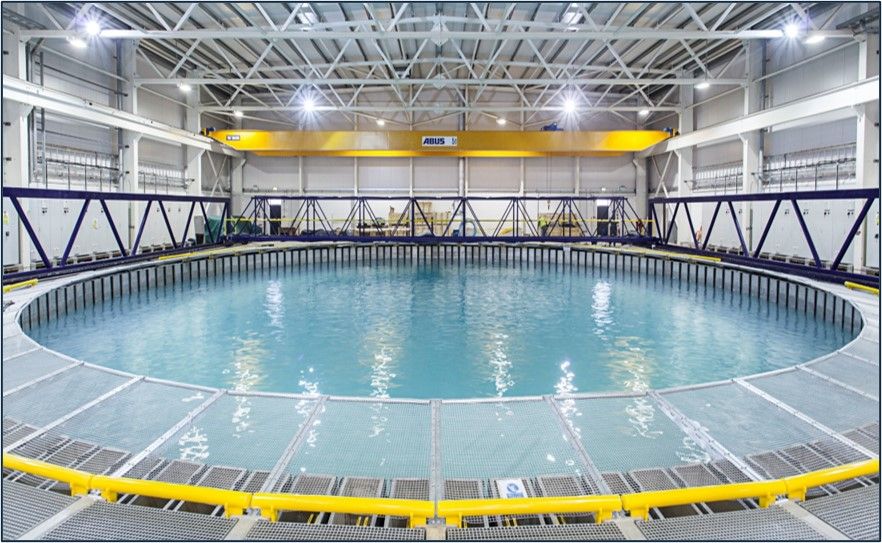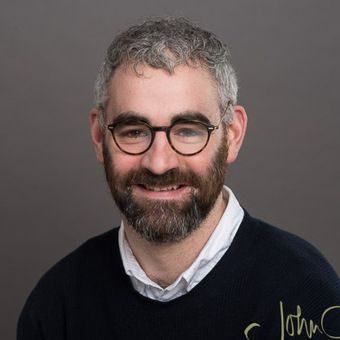London, UK – 19th September 2024 – When waves in the ocean become steep, they break. This process of wave breaking is complex and not fully understood. Wave breaking has broad implications from how offshore structures are designed to weather forecasting and climate modelling. One significant issue with our understanding of wave breaking is that in the past it has often been assumed that waves are two-dimensional. This assumption was necessary to simplify the way in which waves are studied, either theoretically or in computer and experimental models. However, in the oceans, waves can travel in many directions and are not two-dimensional.
“Whether we want it or not, water waves are more often three-dimensional than two-dimensional in the real world. In 3D, there are more ways in which waves can break.” Says Prof. Frederic Dias of University College Dublin and Université ENS Paris-Saclay.
A new experimental study led by Dr Mark McAllister (University of Oxford, Wood Thilsted Partners Ltd) and Prof. Ton van den Bremer (University of Oxford, TU Delft) has been carried out to study how the three-dimensionality or `directional-spreading’ of ocean waves affects when they break. This builds on previous work which highlighted the importance of directional spreading or three-dimensionality and wave breaking in the occurrence of the Draupner Freak wave. This new study, published in Nature on 18 September 2024 (M. L. McAllister, S. Draycott, R. Calvert, T. Davey, F. Dias and T. S. van den Bremer. 2024. Three-dimensional wave breaking. Nature.) aimed to gain a better understanding of exactly why this was the case. The international team of researchers behind this project were based at the University of Oxford, University of Edinburgh, University of Manchester, University College Dublin, Université Paris-Saclay and TU Delft.
The results of the study show that three-dimensionally spread waves can become twice as steep as two-dimensional waves before they break.
“We show that in these directional conditions, waves can far exceed the commonly assumed upper limit before they break” says Sam Draycott, who is a Senior Lecturer in Ocean Engineering, University of Manchester.
Additionally, the researchers found another phenomenon that is unprecedented according to Van den Bremer: “Once a conventional wave breaks, it forms a white cap, and there is no way back. But when a wave with a high directional spreading breaks, it can keep growing.” The study shows that these enormous waves can grow to four times the conventional limiting steepness while breaking.
The knowledge that multidirectional waves can become as much as four times larger than was deemed possible in 2D can help design safer marine structures. “The three-dimensionality of waves is often overlooked in the design of offshore wind turbines and other structures in general. Our findings suggest that this could lead to designs that are less reliable”, says Dr Mark McAllister of the University of Oxford and Wood Thilsted Partners Ltd.
These novel experiments were made possible by the unique shape of the FloWave (https://www.flowavett.co.uk/) circular wave basin, alongside the development of new measurement methods.
“Creating the complexities of real-world sea states at laboratory scale is central to the mission of FloWave. This work takes this to a new level by using the multi-directional capabilities of the wave basin to isolate these important wave breaking behaviours.” says Dr Thomas Davey, Principal Experimental Officer, FloWave, University of Edinburgh.

FloWave Ocean Energy Research Facility in Edinburgh. The circular basin has a diameter of 25 metres and can be used to generate waves from multiple directions.
A 3D measurement method developed in the FloWave lab paved the way for these new insights. “Conventional 2D wave measurement methods weren’t up to the task”, Van den Bremer explains, which is why the research group designed a new way to create 3D wave measurements. Ross Calvert of the University of Edinburgh: “This is the first time we’ve been able to measure wave heights at such high spatial resolution over such a big area, giving us a much more detailed understanding of complex wave breaking behaviour.”
To read the paper ‘Three-dimensional wave breaking’ as published in Nature, visit https://www.nature.com/articles/s41586-024-07886-z

Lead-author, Dr Mark McAllister:
Dr Mark McAllister is a Senior Scientist at Wood Thilsted, where he plays a vital role in projects involving the design and optimisation of offshore wind infrastructure. His specialism lies in ocean engineering, with particular expertise in extreme and breaking waves. This knowledge is crucial to ensuring the structural integrity and longevity of offshore structures in the harsh marine environment. At Wood Thilsted, Mark works on cutting-edge solutions to improve the design of offshore wind farms, while his academic affiliation with the University of Oxford allows him to engage in leading research in the field.
Wood Thilsted:
Wood Thilsted is a specialised offshore wind engineering consultancy designing the transition to clean energy. The company’s unmatched experience in end-to-end offshore wind, from project exploration to operation and lifetime extension, is delivering some of the world’s largest offshore wind farms more efficiently and at a lower cost.
For more information about Wood Thilsted and its Climate Analytics and Loads department, visit woodthilsted.com or follow us on LinkedIn.
Press / Media Enquires:
James Kavanagh
Marketing and Communications Manager
Wood Thilsted, Bristol / London
Email: jka@woodthilsted.com
Website: www.woodthilsted.com
